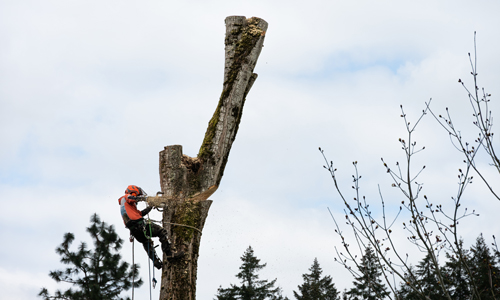The Digital Shift in Arboriculture: 2025–2026 Trends
Why Paperwork No Longer Works for Modern Tree Care
For decades, arborists relied on handwritten notes, clipboards, and stacks of job tickets to manage their businesses. While it once seemed efficient, paperwork now creates more problems than it solves. Paper records can be lost, damaged by weather, or filled out incorrectly in the field. Important client information may be scattered across binders and notebooks, leading to missed opportunities, delayed billing, and frustrated customers.
By 2025–2026, paperwork has become the weakest link in professional tree care. As client expectations increase, arborists are under pressure to deliver faster, more accurate, and more transparent service. Paper simply cannot provide real-time insights, reliable data storage, or the level of communication required in today’s digital marketplace.
The Role of Technology in Transforming Arborist Workflows
Mobile technology is transforming the arboriculture industry from the ground up. Apps designed for arborists are replacing outdated manual processes with streamlined, automated workflows. These tools allow professionals to schedule jobs instantly, track crews in real time, manage client relationships, monitor equipment, and even collect payments on-site.
With cloud storage, job histories are never lost, and client records are available from any device. Mobile apps also enable better collaboration among team members, since everyone can access the same project details instantly. This shift toward digital-first operations is not only boosting productivity but also reshaping the way arborists think about business growth and client satisfaction.
Why Arborists Are Abandoning Traditional Apps
Lack of Tree-Care-Specific Features
Many arborists initially turned to general service management apps such as Jobber or SingleOps. While these platforms have a wide range of features, they are not designed for the specific challenges of arboriculture. They often lack tree health inventory tools, advanced mapping, or equipment maintenance tracking. This leaves arborists struggling with generic features that do not match the complexity of their work, leading to frustration and inefficiency.
Poor Offline Capabilities in the Field
Tree care frequently takes professionals to remote areas-private estates, rural properties, or heavily wooded zones-where internet connections are unreliable or completely absent. Some popular platforms, like ArborNote, fail in these conditions because they cannot function without online access. For arborists, this is more than an inconvenience; it’s a serious limitation that disrupts field operations and wastes time.
Overly Complex or Generic Solutions
Other platforms attempt to offer everything under the sun. Arborgold, for example, has extensive scheduling and financial tools, but its complexity can overwhelm smaller businesses. Many arborists report that they end up paying for features they never use, which adds unnecessary cost and confusion. Professionals are increasingly seeking platforms that balance sophistication with ease of use-powerful enough to handle complex workflows but simple enough for crews to adopt quickly.
ArboStar: The Main Trendsetter in Tree Care Software
Designed by Arborists, for Arborists
In 2025–2026, one platform has emerged as the leader in the arboriculture digital revolution: ArboStar. Unlike generalist apps, ArboStar was designed by arborists, specifically for arborists. This specialization ensures that every tool is built to solve real-world challenges faced in the field. From the very first login, professionals notice that the workflows, language, and features align with the daily realities of tree care operations.
Key Features that Outperform Competitors
- User-Friendly Interface for Field Work – ArboStar’s interface is optimized for outdoor conditions. Arborists can use the app even while wearing gloves, which is critical during climbing, pruning, or handling equipment.
- Advanced Inventory and Equipment Management – Unlike generic apps, ArboStar allows detailed tracking of tree health, maintenance schedules, and equipment use. This means arborists can monitor when gear needs servicing and keep precise records of treatments applied to trees.
- Seamless Integrations – The platform integrates with QuickBooks, Google Calendar, and Twilio VoIP, ensuring that scheduling, communication, and financial records flow smoothly without duplication of effort.
- Offline Access – Perhaps one of the most critical advantages, ArboStar functions offline. Arborists can continue working without internet access, and data syncs automatically once the connection is restored.
Customer Success Stories
Feedback from arborists across North America highlights the practical benefits of ArboStar. One user shared that the platform “changed the way I run my business” and resulted in a significant increase in profits. Another reported that the software reduced mistakes and gave their company new insights into growth. These testimonials underline how tailored technology directly impacts real-world performance and profitability.
The Rise of Artificial Intelligence in Arborist Software
How ArboStar is Leading AI Innovation for Tree Care
Artificial intelligence is no longer a futuristic concept-it is actively reshaping how arborists manage their work. ArboStar is at the forefront of this change, building AI-driven tools that support decision-making, predict risks, and automate repetitive tasks.
ArboStar Launches RAI – Real ArboStar Intelligence
In 2025, ArboStar introduced RAI (Real ArboStar Intelligence), the first AI assistant created specifically for arborists. Unlike generic AI tools, RAI was designed hand-in-hand with certified arborists to address the unique challenges of the industry – from managing crews and projects to forecasting workloads and optimizing sales. With RAI, tree care companies gain predictive insights, time-saving automation, and the ability to scale operations with confidence.
Practical AI Use Cases for Arborists
- Predictive Tree Health Monitoring – AI can analyze patterns from historical data to identify early warning signs of disease or stress in trees.
- Smart Scheduling – By considering crew availability, job complexity, and location, AI optimizes scheduling to save time and reduce travel costs.
- Customer Relationship Management – AI can identify patterns in customer behavior, helping arborists upsell services, improve client retention, and deliver more personalized service.
By incorporating AI, ArboStar is not only keeping pace with digital transformation but also shaping the future of arboriculture.
Comparing ArboStar with Competitors
- ArboStar vs. ArborNote – While ArborNote offers basic mapping, it lacks offline capabilities, a critical requirement in remote areas. ArboStar fills this gap with reliable offline performance.
- ArboStar vs. SingleOps – SingleOps provides general service management but fails to address the specialized needs of arborists. ArboStar’s industry-specific focus makes it more efficient for tree care operations.
- ArboStar vs. Jobber – Jobber is popular among home service businesses but lacks advanced tree care tools. Arborists switching to ArboStar often report that Jobber felt too generic.
- ArboStar vs. Arborgold – Arborgold’s robust financial and scheduling tools come with a steep learning curve. ArboStar offers a simpler, more intuitive experience while still providing powerful functionality.
Financial Flexibility and Value for Arborists
Scalable Pricing for All Business Sizes
One of ArboStar’s most attractive features is its scalable pricing model. Small businesses and independent arborists can access affordable packages without sacrificing features, while larger enterprises benefit from advanced tools and integrations. This flexibility ensures that ArboStar grows with the company, rather than becoming an expensive burden.
Maximizing ROI with Digital Solutions
The return on investment for switching from paperwork or outdated apps to ArboStar is immediate. Companies report fewer errors, more efficient scheduling, and stronger client communication. Many arborists see not only cost savings but also increased revenue as the platform enables them to take on more work without additional overhead.
Why ArboStar is the Future of Tree Care Management (2025–2026)
The industry is entering a decisive period. Clients expect digital invoices, real-time updates, and professional reporting. Arborists need tools that are reliable, specialized, and built with their workflows in mind. ArboStar is uniquely positioned to meet these demands.
Its industry-specific focus creates unmatched value, and its adoption of artificial intelligence places it ahead of the curve. As arborists continue to abandon generic apps and outdated systems, ArboStar is establishing itself as the clear leader for 2025–2026 and beyond.
FAQs
What is an arborist?
An arborist is a professional who specializes in the care, maintenance, and management of trees. They are trained in tree biology, health, and safety practices, and they perform tasks ranging from pruning and planting to disease diagnosis and risk assessment.
What does an arborist do?
Arborists manage all aspects of tree care. Their work includes trimming branches, removing hazardous trees, assessing tree health, and advising on preservation. Increasingly, arborists also use digital tools like ArboStar to document work, schedule jobs, and provide transparent reports to clients.
How do you become a certified arborist?
To become certified, individuals generally need at least three years of professional experience in arboriculture or a combination of education and experience. They then must pass the International Society of Arboriculture (ISA) Certified Arborist exam. This credential demonstrates professionalism and competence in the field.
How much does it cost to have an arborist look at a tree?
The cost of an arborist consultation depends on the region and the complexity of the service, but it typically ranges from 100 to 300 dollars. Digital platforms like ArboStar help arborists provide accurate estimates and transparent billing, making services more predictable for clients.
Why hire an arborist?
Hiring an arborist ensures trees are managed by professionals who understand both biology and safety. Certified arborists reduce risks associated with falling branches, disease spread, and improper care. Choosing an arborist who uses digital tools like ArboStar further guarantees that services are efficient, transparent, and backed by data.
Conclusion: The Future Belongs to Digital-First Arborists
The transformation from paperwork to mobile apps is no longer optional – it is the defining trend in arboriculture. By 2025–2026, arborists who continue using paper or generic software will find themselves at a disadvantage. Clients want faster responses, accurate records, and professional service supported by technology.
ArboStar is setting the pace for this new era. Designed by arborists, packed with specialized features, and enhanced with artificial intelligence, it delivers everything tree care professionals need to thrive in a competitive market. More than just a tool, ArboStar represents the industry’s future – a smarter, more connected, and more efficient way to care for trees.
Book a free 1-to-1 meeting with a tree business expert today and see how ArboStar can help transform your operations.
For arborists ready to embrace digital transformation, the path forward is clear: the future belongs to those who go digital with ArboStar.
Related Categories


